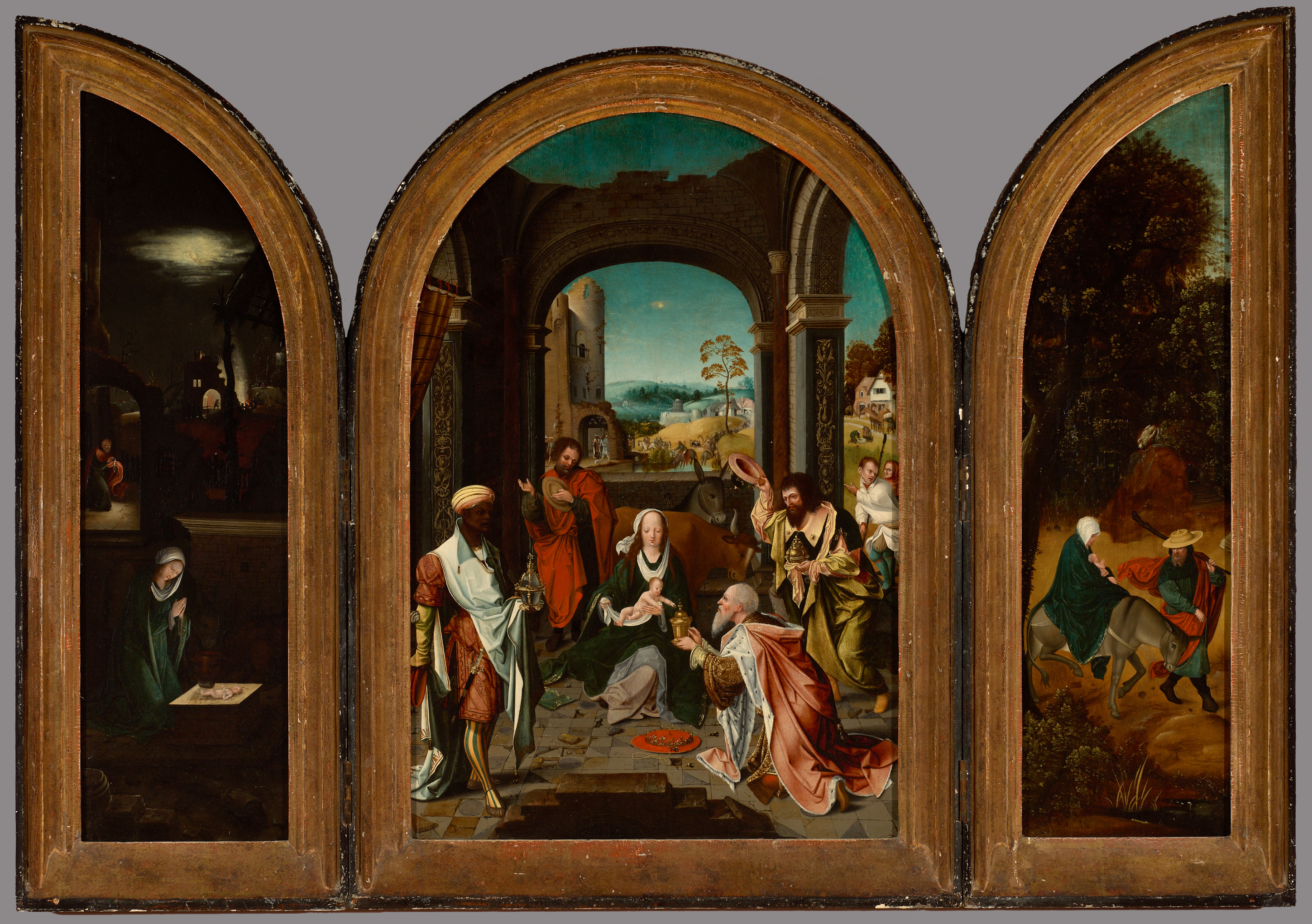Object of the Month: "Adoration Triptych" after Jan de Beer
By Bowdoin College Museum of Art
From the start of my time at the Museum this summer, I have been drawn to the Adoration Triptych in the Bowdoin Gallery, specifically due to its strong use of light and vivid colors. From the workshop of Flemish painter Jan de Beer, it depicts three scenes of the early life of Jesus Christ. In The Nativity on the left panel, we see a fantastic use of light in a relatively dark scene. There are three or four sources of light, including a fire of shepherds being told of the birth of Christ, a light coming from the sky, and light emanating from Christ Himself, showing His divinity. The Adoration of the Magi in the center panel is the main piece of the triptych. It depicts three Magi, Balthazar from Africa, Caspar from India, and Melchoir from Persia, bearing gifts to Christ and Mary. I love the use of line in this piece, with two imaginary diagonals centering Mary’s head, signifying her importance in the Catholic church. Finally, in The Flight into Egypt on the right panel, we see Mary and Joseph taking Christ out of the city, after it was decreed that all children under the age of two would be killed following the news of the birth of the Messiah. Here, concurrent with the other panels, we see the bright white of Mary’s scarf, representative of her purity throughout the stories. In relation to other pieces in our gallery and beyond, it is crucial that we consider the specific artistic choices made to highlight and give importance to certain people, in a religious, political, or social context, and search for the meaning that this has beyond the piece of art itself.
Alex Withers ’21, Curatorial and Educational Assistant